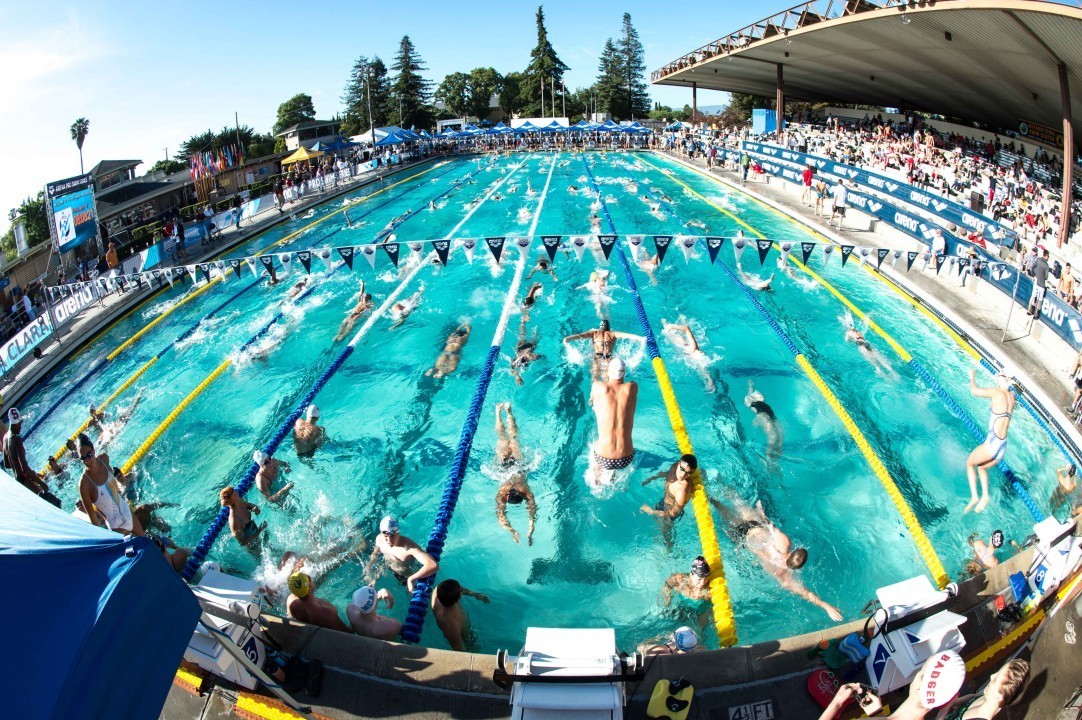SwimSwam welcomes reader submissions about all topics aquatic, and if it’s well-written and well-thought, we might just post it under our “Shouts from the Stands” series. We don’t necessarily endorse the content of the Shouts from the Stands posts, and the opinions remain those of their authors. If you have thoughts to share, please send them to [email protected].
Thanks to Ken Shimizu, club swimmer at Cornell University, for contributing this report about swimming at the club level in college:
Going to college? Swam in high school? Not sure if you’re fast enough for the varsity team? Not sure if you’re willing to commit the time and effort to swim on the varsity team? Do you really just really enjoy swimming and want to continue competitively?
I answered yes to all of the above when I was an incoming freshman. And no, I do not currently swim on the varsity team at my school, Cornell University.
But I am still swimming at the collegiate level. How is this possible?
When people hear the words “college swimming,” they tend to think of the NCAA. Many schools across all 3 divisions have varsity teams that compete in this association. However, a number of schools also have another way that people can continue swimming, training, and competing against other colleges and universities: Club swim teams.
Club swimming enables college students to improve technique and skills, stay in shape, bond with other teammates, and maintain a serious attitude about swimming without the enormous time commitment and immense pressure that comes with being on the varsity team. Many collegiate club swim teams travel to meets at other schools throughout the year to compete against other club teams. There is even a national championship hosted by the Georgia Tech Swim Club in April: The East Coast Collegiate Swim and Dive Club National Championship. This meet is recognized by USA Swimming, and teams from all over the United States come to Atlanta to race in this very fast meet.
Some perks of club swim: Practices are challenging and fun. I’m still improving. I’m still setting goals. I have time to focus on school. I’ve met some of my best friends through the club team. And, last but not least, I’ve had plenty of time to get involved with other campus activities and student groups. Time is a precious commodity in college that students can’t get enough of, but club swimming opens up opportunities to take advantage of all that college has to offer.
My team at Cornell demonstrates the relaxed yet serious atmosphere that club swimming can generate. We hold practice 5 days a week, supplement pool time with dryland workouts, race 3 times each semester at local and regional meets, play games of ultimate Frisbee, and organize social events and dinners to come together as a team. Our team is comprised of people from different swimming backgrounds: high school teams, club teams, YMCA teams, and people who just like to swim. Speed is not in short supply, either. One of our swimmers set a New York state record as part of a 200 medley relay. A number of us have competed in state meets and larger regional competitions. Even if you are quick in the pool, it is not mandatory that you swim on your school’s varsity team; the NCAA is not the only option.
Interested in club swimming? USA Swimming lists 150 schools that have club swim teams. Don’t see your school listed? No sweat. Start your own team! Many club swim teams are funded by their school and the team members. If you’re not sure what to do, it’s helpful to ask board members of other club sports teams at your school for advice.
Collegiate club swimming is just one of many club sports that schools everywhere have for their students. At Cornell alone, there are over 60 club sport teams that students can try out for and join. Deciding whether to swim on a collegiate varsity team is a tough process (I’ve been through it myself), but club swimming is an option that just might make that decision a little easier.

Great article describing the joys of staying fit, and for some of you continuing to compete all while being involved in a fun, social and motivating atmosphere. And guess what? You described exactly what it is like for many of us involved in U.S. Masters swimming! for kids 18 years old and up – right in their 80s, 90s, and even a few at 100+ years young! It certainly doesn’t end after high school or your club experience. And it also doesn’t have to end after college. Ed Tsuzuki, Cornell ’80 – not nearly as fast as I used to be, but loving swimming more than ever.
Great post Ken. You really captured the joy of athletic competition for its own participation’s sake. This is such a needed conversation. At DiveSeattle, we feel the same way. We try to balance our recreational program with our competitive program as competitive programs need a training ground and those that do not move on to hard competition still benefit from the discipline and joy that comes with continued growth as an athlete. This focus is part of our aim to raise the sport of competitive diving to a much broader place in general swimming and aquatics.